LED linear lighting is a versatile and efficient lighting solution that is revolutionizing the way we illuminate our spaces.
We will explore how LED linear lighting works, the benefits it offers, the different types available, and how it is used in commercial, residential, and outdoor spaces.
Discover the factors to consider when choosing LED linear lighting, the installation process, maintenance tips, and why this lighting option is a smart choice for your lighting needs.
Join us as we shed light on the world of LED linear lighting.
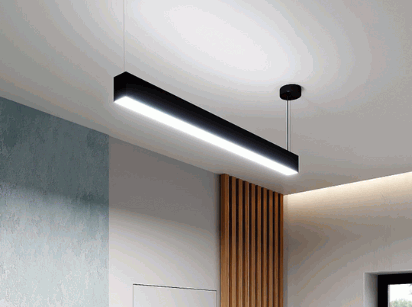
What Is LED Linear Lighting?
LED Linear Lighting refers to a type of lighting system that utilises Light Emitting Diode (LED) technology in a linear configuration to provide efficient and versatile lighting solutions. These fittings are designed to offer energy-efficient illumination in various spaces, such as offices, workplaces, and modern residential areas.
This type of lighting is popular for its sleek and contemporary design, making it a preferred choice for architects and interior designers seeking to create modern and stylish environments. LED Linear Lighting fittings come in various shapes and sizes, allowing for flexible installation options and customization to fit the specific needs of different applications.
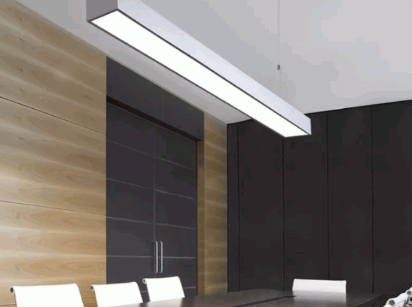
How Does LED Linear Lighting Work?
LED Linear Lighting operates by using LED modules arranged in a linear system to produce light. These modules are highly energy-efficient, converting a higher percentage of electricity into light compared to traditional fluorescent or incandescent bulbs.
The linear system of LED Linear Lighting allows for a consistent and uniform distribution of light, making it ideal for various applications such as offices, warehouses, and retail spaces. Due to their directional light emission, LED linear fixtures can reduce glare and create a more comfortable environment for tasks and activities. The energy-saving features of LED Linear Lighting translate to lower electricity bills and reduced carbon emissions, aligning with sustainability goals.

What Are The Benefits Of Using LED Linear Lighting?
The benefits of LED Linear Lighting include energy efficiency, longevity, and the ability to create optimal workplace lighting conditions. These fixtures reduce energy consumption and maintenance costs while providing consistent and high-quality light output.
Plus being energy-efficient, LED Linear Lighting offers many advantages in the workplace environment. The durability of LED fixtures ensures long-lasting performance, reducing the frequency of replacements and minimising disruptions to daily operations.
The consistent and high-quality light output of LED Linear Lighting contributes to a comfortable and productive atmosphere for employees. This lighting solution is known for its ability to reduce glare and eye strain, creating a suitable ambiance that enhances focus and minimizes fatigue during work hours.
Learn more: What Are The Advantages Of LED Lighting
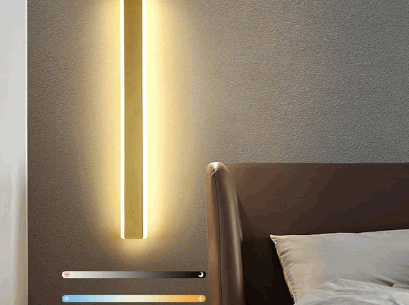
What Are The Different Types Of LED Linear Lighting?
LED Linear Lighting comes in various types, including Linear Pendant lights, Linear high bay lights, and Modular LED systems. These fittings offer flexibility in design, allowing for customised lighting solutions in different areas and spaces.
Linear Pendant lights, known for their suspended design and ambient illumination, are popular in modern interior settings, such as restaurants, offices, and residential spaces. On the other hand, Modular LED systems provide a versatile solution for creating dynamic lighting configurations, perfect for retail spaces, galleries, and exhibition halls.
How Is LED Linear Lighting Used?
LED Linear Lighting is commonly used in various settings, including commercial spaces, residential areas, and outdoor environments. Its versatility and efficiency make it a popular choice across the lighting industry.
In commercial spaces, LED Linear Lighting is often employed to create a well-lit and inviting ambiance, enhancing productivity and customer experience. These linear fixtures can be seamlessly integrated into office spaces, retail stores, and restaurants, providing a sleek and modern aesthetic.
Residential areas benefit from the flexibility of LED Linear Lighting, allowing homeowners to customise their lighting design to suit different moods and activities. The energy efficiency of these fixtures also contributes to cost savings and a more sustainable living environment.
Outdoor environments such as parks, walkways, and architectural facades can be beautifully illuminated with LED Linear Lighting, adding both safety and visual appeal to these spaces.
In Commercial Spaces
In commercial spaces, such as offices, LED Linear Lighting fittings are preferred in offices due to their energy efficiency and longevity, resulting in cost savings over time. The sleek and contemporary design of these fittings adds a touch of sophistication to office interiors, making them visually appealing. The adjustable brightness and colour temperature options of LED Linear Lighting help create customisable lighting solutions to cater to different tasks and moods within the workspace.
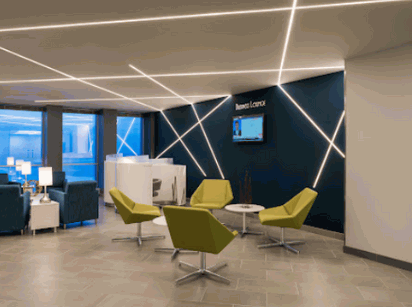
In Residential Spaces
Residential spaces benefit from LED Linear Lighting for its ambient and task lighting capabilities. These fixtures can be seamlessly integrated into modern design concepts, offering both functional and decorative lighting solutions.
LED linear lighting enhances the visual appeal of living spaces by providing a sleek and contemporary lighting option. Its versatility allows for customised lighting solutions, from under-cabinet illumination in kitchens to accent lighting in living rooms and bedrooms. With LED technology, these fixtures consume less energy and have a longer lifespan, making them a sustainable choice for homeowners.
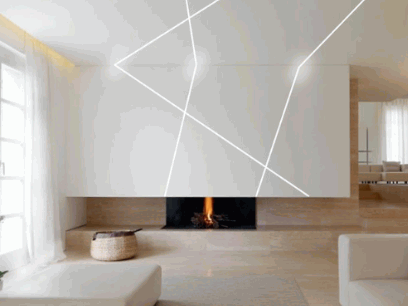
In Outdoor Spaces
LED Linear Lighting is also utilised in outdoor spaces to illuminate pathways, gardens, and architectural features. Linear lights are often used for outdoor lighting applications due to their durability and energy efficiency.
In outdoor environments, LED Linear Lighting plays a crucial role in enhancing the aesthetic appeal and functionality of various areas. These lights not only provide bright and uniform illumination along pathways but also accentuate the unique features of landscapes and outdoor structures.
The versatility of linear lights allows them to be seamlessly integrated into different outdoor settings, offering a contemporary and sleek look. Their long lifespan and low maintenance requirements make them a practical choice for illuminating outdoor spaces, ensuring longevity and cost-effectiveness.

What Are The Factors To Consider When Choosing LED Linear Lighting?
When selecting LED Linear Lighting, key factors to consider include brightness levels, colour temperature options, energy efficiency ratings, durability, and lifespan. These aspects play a crucial role in determining the suitability of the lighting solution for specific applications.
Brightness levels of LED Linear Lighting are measured in lumens, indicating the intensity of light emitted. Colour temperature options range from warm white to daylight, influencing the ambiance created. Energy efficiency ratings, often denoted by lumens per watt, showcase how effectively the lighting converts electricity into visible light.
Durability of LEDs is crucial for longevity and minimal maintenance needs. The lifespan of LED Linear Lighting, typically exceeding traditional lighting options, impacts the total cost of ownership and environmental impact, making it a sustainable choice for various settings.
Brightness And Colour Temperature
Brightness and colour temperature are critical aspects to evaluate when selecting LED Linear Lighting for different spaces. The right balance of light intensity and warmth can significantly impact the ambiance and functionality of the area.
When considering brightness, it’s essential to think about the amount of light needed to illuminate the space adequately without causing glare or shadows. Colour temperature, on the other hand, plays a vital role in setting the mood and ambiance – warmer tones create a cosy atmosphere, ideal for relaxation areas, while cooler temperatures are more suitable for task-oriented spaces like offices or kitchens. Striking the perfect balance between these two factors can transform a dull room into a vibrant, inviting environment that enhances the overall aesthetic appeal of the space.
Energy Efficiency
Energy efficiency is a key factor in choosing LED Linear Lighting, as these fittings consume less power and have a longer lifespan compared to traditional lighting sources.
LED Linear Lighting offers several advantages over conventional lighting options due to its superior energy efficiency. By utilising LED technology, these fittings convert a higher percentage of electricity into visible light, minimising wasted energy.
This translates not only into lower energy bills for users but also reduces the overall carbon footprint. The longer lifespan of LED lights means less frequent replacements, further reducing maintenance costs and minimising the impact on landfills.
The shift towards energy-efficient lighting solutions such as LED Linear Lighting is a step towards a more sustainable and eco-friendly future.
Durability And Lifespan
Durability and lifespan are crucial considerations when choosing LED Linear Lighting systems. Opting for fittings with robust construction and long-lasting LED components ensures reliable performance and reduces the need for frequent replacements or maintenance.
Long-term reliability is a key advantage of investing in high-quality LED linear lighting systems. When these durable fittings are properly installed, they can provide consistent illumination for years to come without significant degradation in brightness or efficiency. This not only enhances the overall lighting experience but also contributes to cost savings by minimising the expenses associated with upkeep and replacements. The extended lifespan of LED lighting systems allows for greater flexibility in designing and maintaining various indoor and outdoor spaces, ensuring a consistent and energy-efficient lighting solution.
Design And Aesthetics
Design and aesthetics play a significant role in LED Linear Lighting selection, as fixtures need to complement the existing decor and architectural style of the space.
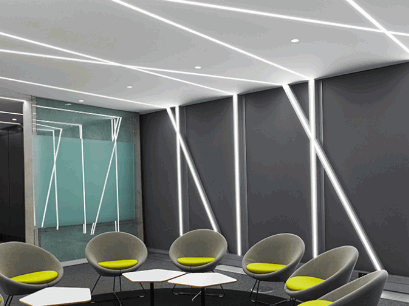
How To Install LED Linear Lighting?
Installing LED Linear Lighting can be done through various methods, including Surface Mounting, Suspended Mounting, and Recessed Mounting. Each mounting option offers unique installation benefits and aesthetic considerations.
Surface Mounting involves attaching the LED linear lights directly to the ceiling or wall using mounting brackets or clips. This method is ideal for spaces with solid ceilings where a seamless look is desired.
Suspended Mounting, on the other hand, hangs the lights from the ceiling using cables or suspension kits, creating a modern and dynamic lighting effect.
Recessed Mounting places the lights within the ceiling, providing a sleek and integrated appearance. Consider the height of the ceiling, the desired lighting effect, and the accessibility for maintenance when choosing the mounting method for your LED Linear Lighting installation.
Surface Mounting
Surface Mounting LED Linear Lighting involves fixing the fittings directly onto the ceiling or wall surface. This installation method is commonly used in offices and commercial spaces for its simplicity and ease of maintenance.
By choosing Surface Mounting, the sleek and modern design of LED Linear Lighting can seamlessly blend into the office environment, providing ample illumination without occupying valuable floor space. The fittings are mounted flush against the surface, creating a clean and unobtrusive look. Plus their aesthetic appeal, these lights are also energy-efficient, making them a cost-effective lighting solution for office environments.
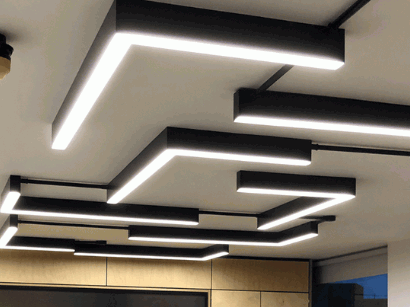
Suspended Mounting
Suspended Mounting of LED Linear Lighting involves hanging the fittings from the ceiling using cables or rods.
This installation method adds a modern and stylish look to the space, elevating the overall design aesthetics. Suspended lighting creates a visually striking effect by casting light downwards, enhancing the ambience in a unique way. It is a popular choice for illuminating areas where a sleek and contemporary feel is desired.
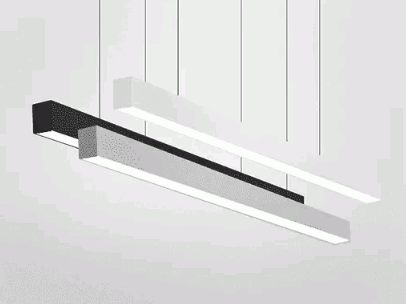
Recessed Mounting
Recessed Mounting involves installing LED Linear Lighting fixtures into the ceiling or wall cavity for a seamless and integrated look. This method helps save space and directs light efficiently, contributing to energy savings.
By recessing the fixtures, you are not only creating a clean and modern aesthetic but also maximising the available space in the room. The lights become a subtle part of the architecture, blending in seamlessly without protruding or occupying valuable square footage. This design choice offers a sleek and unobtrusive lighting solution that complements various interior styles.

What Are The Maintenance Tips For LED Linear Lighting?
To ensure optimal performance and longevity of LED Linear Lighting, regular maintenance is essential. Cleaning the fittings, checking for loose connections, and monitoring the light output can help preserve the quality of illumination and prevent potential issues.
When cleaning LED linear lighting, it is important to use a soft cloth or a mild, non-abrasive cleaner to avoid damaging the delicate LEDs. Ensure that the fittings are completely dry before switching them back on to prevent any electrical hazards. Checking for loose connections by inspecting the wiring and connectors ensures a secure electrical connection, reducing the risk of flickering or dimming lights. Monitoring the light output regularly not only helps in detecting any early signs of malfunction but also allows for adjustments to maintain consistent brightness levels.
Conclusion
LED Linear Lighting stands out as an energy-efficient and versatile lighting solution that caters to diverse lighting needs in workplaces, commercial spaces, and residential areas. Its ability to combine functionality with modern design elements makes it a preferred choice for creating well-lit and visually appealing environments.
LED Linear Lighting offers a wide range of benefits beyond its aesthetic appeal. With its energy-efficient nature, LED lighting reduces electricity consumption, leading to cost savings in the long run. These lighting systems have a longer lifespan compared to traditional lighting sources, reducing maintenance and replacement costs.
Regarding applications, LED Linear Lighting is incredibly versatile. It can be used for general ambient lighting, task lighting, accent lighting, and even architectural lighting, allowing for customisation based on specific lighting requirements.
Not only does LED Linear Lighting enhance the overall look and functionality of a space, but it also plays a crucial role in promoting a productive and conducive environment in various workplace settings. By providing consistent and reliable illumination, LED lighting contributes to improved concentration, reduced eye strain, and enhanced well-being.







